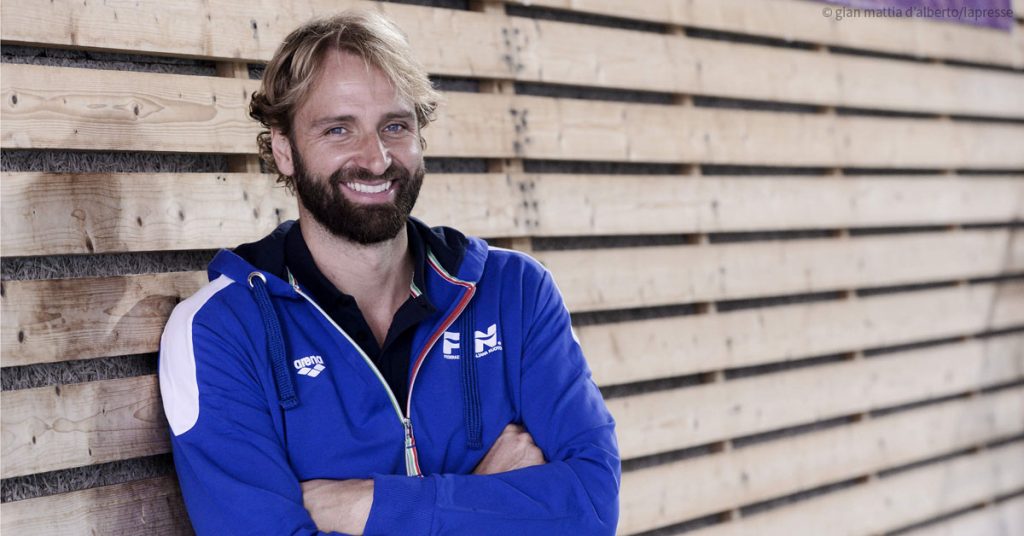Swimming has always been considered the best all-round sport and is particularly recommended for babies and young children when they are growing up. Introducing children to the world of swimming, understanding the parent’s role, and making sure kids enjoy themselves right from when they are very young, can sometimes be as difficult as getting grown-ups interested in the sport and making sure their experiences are both enjoyable and safe. Arena decided to ask Massimiliano Rosolino, an Olympic swimming champion and the father of two lovely young girls, to give us his tips for families.
Introducing a four-year-old child to the water might be a little tricky at first, due to how frightening and intimidating it might seem to very young children. Working on the assumption that there is no right age for introducing your children to the water, this can even be done at a very early age, thanks to special introductory courses. My advice is to let them take the plunge at least by the age of four and then take them to the swimming pool at least once a week. This will ensure they feel at ease in the water straightaway, have fun and enjoy a very natural relationship with the water, without feeling in any way afraid.
The parent and swimming instructor have the most important roles to play in introducing very young children to swimming. But the parent must, above all, just be an onlooker and let the instructor take the lead. A child will feel freer and more aware of the rules to be followed if they are dealing with somebody who is not a family member. However, this does not mean that a parent has no responsibility or role to play; on the contrary, they must provide their child with as much support as possible, praising them for their bravery in taking the plunge, understanding their fears and encouraging them to gradually overcome them without interfering with what the instructor is teaching them.
Sometimes children cry the first time there are asked to take the plunge. Crying is actually a normal reaction and children need to express their feelings. Without forcing them to enter the water, a parent needs to find the right way to make their initial experiences, both in the sea or pool, as much fun and as relaxing as possible. Do not make comparisons with other children, pointing out that they might be quicker or more intrepid than their own children. A parent should try and get their children to play in the water with their classmates or even join them in the pool themselves. This approach will make the child feel more at ease and help create just the right positive sensations in the water.
When it comes to children aged 6-14, on the other hand, my advice is to enrol children aged six upwards on swimming courses. Parents should take their children to the pool at least twice a week, three times if they are attending a more advanced course. Here again the role of the parent is to make sure their child attend lessons regularly, even if they are not particularly talented, going with them and finding the right way to motivate them. A parent has the important task of teaching their child the importance of attending regularly and not missing lessons just because they are not particularly good. In the end consistency and dedication will produce the desired results.
